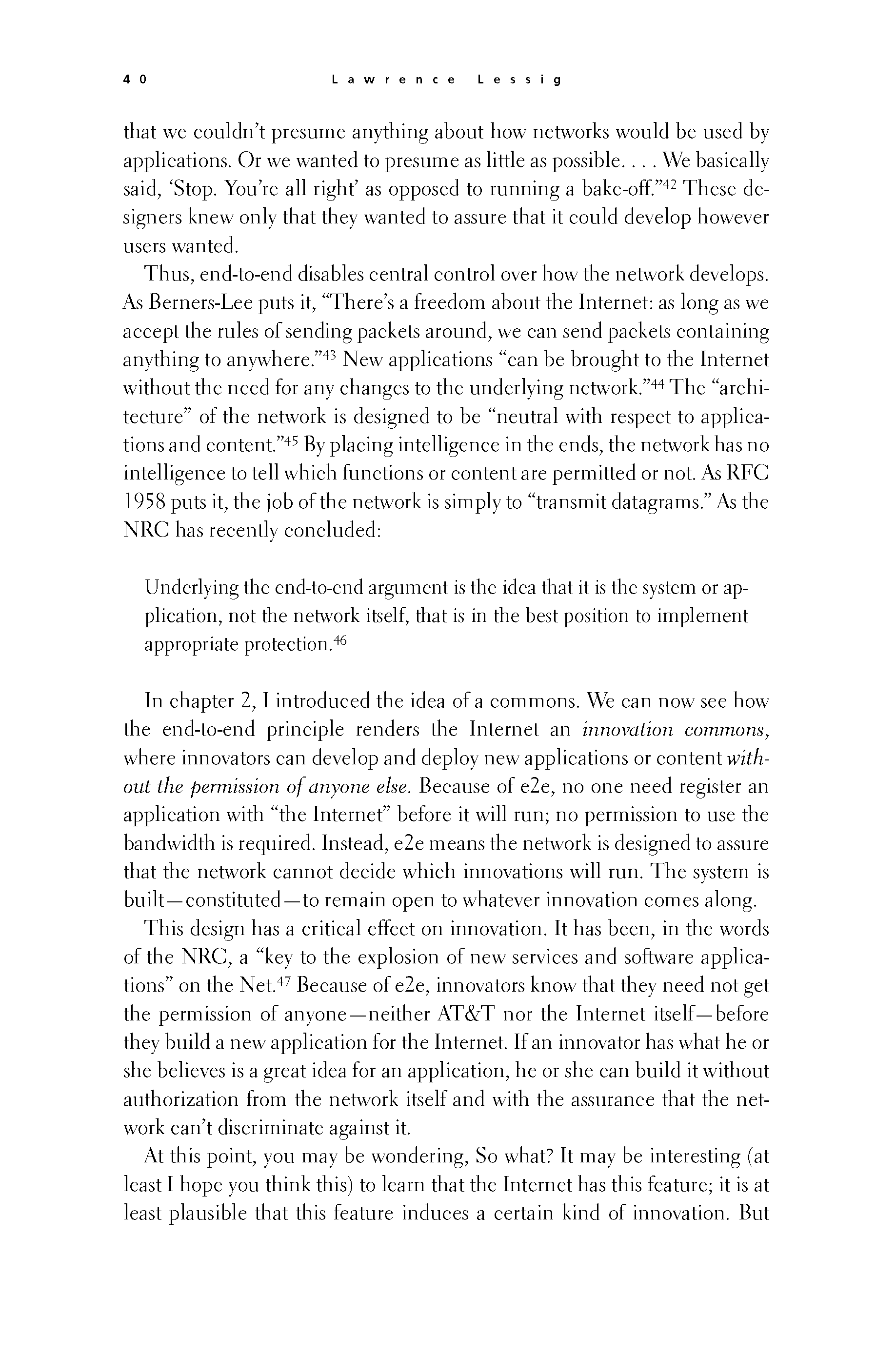 p039 _
-chap- _
toc-1 _
p040w _
toc-2 _
+chap+ _
p041
p039 _
-chap- _
toc-1 _
p040w _
toc-2 _
+chap+ _
p041
that we couldn't presume anything about how networks would be used by
applications. Or we wanted to presume as little as possible... We basically
said, 'Stop. You're all right' as opposed to running a bake-off."[3-42] These de-
signers knew only that they wanted to assure that it could develop however
users wanted.
Thus, end-to-end disables central control over how the network develops.
As Berners-Lee puts it, "There's a freedom about the Internet: as long as we
accept the rules of sending packets around, we can send packets containing
anything to anywhere."[3-43] New applications "can be brought to the Internet
without the need for any changes to the underlying network."[3-44] The "archi-
tecture" of the network is designed to be "neutral with respect to applica-
tions and content."[3-45] By placing intelligence in the ends, the network has no
intelligence to tell which functions or content are permitted or not. As RFC
1958 puts it, the job of the network is simply to "transmit datagrams." As the
NRC has recently concluded:
____ Underlying the end-to-end argument is the idea that it is the system or ap-
____ plication, not the network itself, that is in the best position to implement
____ appropriate protection.[3-46]
In Chapter 2, I introduced the idea of a commons. We can now see how
the end-to-end principle renders the Internet an _innovation_commons_,
where innovators can develop and deploy new applications or content _with-_
_out_the_permission_of_anyone_else_. Because of e2e, no one need register an
application with "the Internet" before it will run; no permission to use the
bandwidth is required. Instead, e2e means the network is designed to assure
that the network cannot decide which innovations will run. The system is
built -- constituted -- to remain open to whatever innovation comes along.
This design has a critical effect on innovation. It has been, in the words
of the NRC, a "key to the explosion of new services and software applica-
tions" on the Net.[3-47] Because of e2e, innovators know that they need not get
the permission of anyone -- neither AT&T nor the Internet itself -- before
they build a new application for the Internet. If an innovator has what he or
she believes is a great idea for an application, he or she can build it without
authorization from the network itself and with the assurance that the net-
work can't discriminate against it.
At this point, you may be wondering, So what? It may be interesting (at
least I hope you think this) to learn that the Internet has this feature; it is at
least plausible that this feature induces a certain kind of innovation. But
[[40]]
p039 _
-chap- _
toc-1 _
p040w _
toc-2 _
+chap+ _
p041